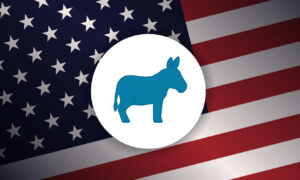The Scoop: Brands tap into April Fools’ Day hijinks for viral engagement
Also: Substack picks up steam as video podcast alternative; True Religion finds balance between finding new shoppers while not abandoning its brand legacy.

April Fools’ Day offers brands a unique opportunity to get creative, engaging customers with playful and sometimes outrageous ideas.
While pranks on April 1 are a tradition, it’s also a chance for companies to showcase their personalities and promote special deals – all with a wink.
Yahoo, for example, launched a grass-covered keyboard for “touching grass” without leaving your desk. The tech company teased the “agricultural interface” in the days building up to the jokepost.
View this post on Instagram
Though much of the fun centered on social media engagement, many brands turned the silliness into real business opportunities and earned media coverage. Omaha Steaks, for example, teased the release of a romance novel, “Certified Tender,” only to reveal it as a joke. The beef company turned the prank into a sales opportunity by offering a special deal on its “Meat Cute Collection” of steaks and wine.
“The only thing we love more than a good romance is an epic April Fools’ joke! While Meat-Cute Romance publishing was fake, ‘Certified Tender’ and the Meat-Cute Collection package are very real!” Omaha Steaks wrote in a follow-up IG post.
USA Today featured Omaha Steaks’ gag. The April Fools’ roundup also highlighted another wine-related stunt, this one a collaboration between wine brand Josh Cellars and Joss & Main, a furniture retailer. The partners pretended to launch a collection of couches and chairs designed to “embrace inevitable red wine spills” with merlot-colored stains already on the furniture. .
The campaign generated extensive news coverage, including a spot in the Daily Mail, and garnered significant social media attention, racking up more likes and comments on Instagram than their typical posts.
While many advertisements were aimed at generating fun, others provided potential market research. The New York Times reported that Cadbury created a fake product that people seemed to genuinely want: Creme Egg on the Goo, a to-go packet of Creme Egg filling.
“Move over boring condiments,” reads the social media post, which features a video of the goo being squeezed onto French fries. The comments section flooded with people saying they’d love to use the product on other foods, but maybe not fries.
However, an April Fools’ campaign can also backfire. For instance, Lipton Ice Tea announced on March 31 that it was discontinuing its beloved peach iced tea. Less than a day later, the brand revealed it was a joke.
While some took it in stride, jokingly demanding compensation for emotional distress, not all fans saw the follow-up post, and some may have thought one of their favorite products was gone for good.
Lipton ended up on at least one list of April Fools’ brand fails as a result.
Beyond the tricks, some brands offered treats, like Popeyes, which launched its (real) “Pickle Menu” on April Fools’ Day, featuring items like a pickle-glazed sandwich and pickle lemonade.
While most of these promotions brought laughs, it’s important to remember that social media feeds are unpredictable and there’s no guarantee that everyone will see the follow-up “It’s just a joke” message and missteps can risk alienating loyal customers.
Editor’s Top Reads
- Substack is evolving beyond newsletters, positioning itself as an all-encompassing platform. With the introduction of live video, it has become a refuge for ex-cable news anchors like Jim Acosta, Don Lemon and Joy Reid, offering them direct access to audiences without the constraints of traditional networks. “People don’t really care if they’re in a coat and tie on the North Lawn of the White House or in an air-conditioned studio in 30 Rock,” said Jeff Zucker, former CNN president, told the New York Times. “They just want to hang out and hear from someone they like and trust.” As more media figures embrace Substack, its influence in shaping the future of journalism, and how audiences consume news, will only grow. Ensure you’re looking at the new talent and formats using Substack and considering all the possibilities for your pitching. Text and video side-by-side can be a powerful combination.
- True Religion is updating its PR and social media strategy to appeal to a more diverse audience, especially within the hip-hop community, which has remained loyal through the brand’s financial struggles. Once a symbol of exclusivity with $400 jeans targeted mainly toward trendy white shoppers, the brand now targets a broader, more affordable market, featuring hip-hop artists like Sexyy Red and Anitta in its “Own Your True” campaign. “You’ll see a lot that brands will realize that hip-hop is really embracing their product, but maybe that wasn’t the customer they intended to go for, so they don’t pursue it,” cultural strategist John Wright told the Wall Street Journal. Many brands are tied to a traditional image or product even if may not resonate with consumers the way it once did. True Religion is a great example and other brands in similar situations, must find a balance between adapting to the market and staying true to their brand identity.
- Hooters has filed for Chapter 11 bankruptcy. A bankruptcy filing has the potential to lead the public to develop uncertainty about the brand’s future. But to get out in front of that, Hooters has been proactive in its messaging, in all of its messaging, making it clear that its business isn’t going anywhere, and the customer experience isn’t changing. In its press release, Hooters emphasizes upfront: “Restaurants remain open, welcoming customers to enjoy its guest-obsessed hospitality and world-famous wings.” This statement is a direct attempt to reassure both current and potential customers that despite the legal proceedings, the dining experience they know and love will continue without disruption. The company is framing the bankruptcy as a strategic step in its evolution, not a sign of decline. “Our renowned Hooters restaurants are here to stay,” said CEO Sal Melilli, reinforcing a message of stability and long-term commitment. By emphasizing the ongoing operation of its restaurants amid the transition to an all-franchise model, Hooters is using its communications to manage perceptions, helping customers feel confident in the brand’s future.
- Heads up: President Donald Trump will announce his “Liberation Day” tariffs at 4 p.m. ET on Wednesday. The announcement is sure to have major ripple effects on a range of businesses. Stay tuned.
Casey Weldon is a reporter for PR Daily. Follow him on LinkedIn.







